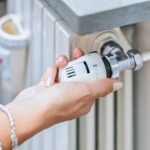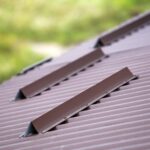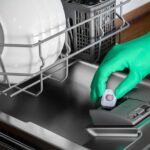In the world of plumbing, one aspect that often goes unnoticed until it’s too late is the infiltration of sewer gases—a hazardous and unpleasant issue. Floor drain trap primers are essential components in maintaining a healthy indoor environment by preventing these unwanted intrusions. This article shines a light on their crucial role and offers a step-by-step guide to proper installation, ensuring your space remains free from odor and health hazards.
- Explore how floor drain trap primers maintain water seals to block sewer gases effectively.
- Understand the benefits of proper floor drain trap installation for enhanced air quality and plumbing efficiency.
- Discover a comprehensive installation guide to ensure a reliable barrier against sewer gases.
By understanding the mechanics and installation process of floor drain trap primers, you’ll be equipped with the knowledge to safeguard your premises from sewer gas infiltration. Dive into this guide to achieve peace of mind and a cleaner indoor environment.
Understanding Floor Drain Trap Primer Installation: Prevent Sewer Gas Issues
Floor drain trap primers play a crucial role in any effective plumbing system, serving as a key component in maintaining water seal integrity and preventing sewer gas issues. These devices are installed to ensure that the water level within the drain trap does not diminish due to evaporation or other factors. By maintaining a consistent water seal, floor drain trap primers act as a reliable defense against the intrusion of unpleasant and potentially harmful sewer gases into indoor spaces.
The mechanism behind floor drain trap primers is relatively straightforward yet highly effective. Essentially, they add water to the floor drain trap whenever there is a drop in water level, which might otherwise break the seal. This process is typically triggered by an increase in water pressure or flow in nearby water lines. In commercial kitchens and other high-traffic areas, where plumbing systems are extensively used, this feature becomes particularly beneficial in avoiding ongoing maintenance issues.
Implementing a floor drain trap primer requires careful planning and expertise. It is critical to integrate it correctly within the existing plumbing structure to maximize efficiency and minimize potential disruptions. For this reason, many choose to work with experienced professionals who understand both the nuances of advanced plumbing systems and the specific requirements of different environments.
Key Benefits of Proper Floor Drain Trap Installation
A properly installed floor drain trap primer offers several advantages that contribute to a more efficient and safe plumbing system. One of the primary benefits is the enhancement of indoor air quality. By preserving the water seal within the drain traps, these primers effectively block sewer gases, which can carry unpleasant odors and harmful contaminants.
Moreover, a well-maintained water trap translates to improved overall plumbing efficiency, as it reduces the frequency of maintenance checks and emergency repairs. This efficiency not only benefits the functioning of the commercial kitchen or facility but also extends the lifespan of the plumbing system itself, leading to considerable cost savings over time.
Furthermore, by preventing sewer gas infiltration, businesses are better positioned to comply with health and safety standards. This aspect is particularly crucial in the food service industry, where maintaining a sanitary environment is imperative.
In summary, investing in a floor drain trap primer installation is a proactive approach to ensuring a functional, safe, and compliant environment. It provides a reliable solution to common plumbing challenges while promoting a healthier indoor atmosphere.
Steps for Floor Drain Trap Primer Installation: Prevent Sewer Gas Issues
Ensuring the effective operation of your plumbing system and maintaining a reliable barrier against sewer gases necessitates the proper installation of a floor drain trap primer. This task, although seemingly intricate, can be managed with a methodical approach.
To start, gather essential tools and materials, including a primer valve, connecting pipes, and necessary plumbing adhesives. Ensure these components are of high quality to guarantee longevity and effectiveness.
Now, examine the site of installation. Identify the drain and assess its proximity to available water lines. This step is crucial, as the primer will draw small amounts of water from the line to keep the drain trap seal full, hence preventing sewer gases from entering the establishment.
Once the location is confirmed, you can proceed with the connections. Attach the primer to the water supply. This should be done meticulously to avoid leaks which can compromise system efficiency. Secure connections with appropriate mounting brackets and ensure firm attachment.
After setting up the primer, it’s time to connect it to the floor drain trap using the dedicated piping. Carefully measure and cut the pipes to fit snugly between the primer and the drain trap. Apply the plumbing adhesive to ensure watertight seals, which are vital for preventing any backflow or drainage issues.
After the physical installation, conduct a thorough test of the system. Slowly turn on the water supply, allowing the primer to fill and pressurize. Observe the setup for any leaks, unusual noises, or operational abnormalities.
This phase not only ensures smooth operation but also reinforces the credibility of the floor drain trap primer in securing your property against harmful sewer gas infiltration.
Lastly, although this guide provides a comprehensive overview, consulting with a plumbing professional is advisable if any uncertainties arise during installation. Their expertise can prove invaluable, especially for highly complex setups.
FAQs About Floor Drain Trap Primer Installation
What is the purpose of a floor drain trap primer?
A floor drain trap primer maintains water seal integrity to prevent sewer gases from entering indoor spaces.
How do floor drain trap primers work?
They automatically add water to the floor drain traps, ensuring they remain filled and effective.
What are the benefits of installing a floor drain trap primer?
Benefits include: improved indoor air quality, efficient plumbing operation, and reduced risk of sewer gas odors.
Can I install a floor drain trap primer myself?
Yes, if you’re comfortable with plumbing tasks; however, professional installation is recommended for optimal performance.
What tools are needed for installing a floor drain trap primer?
You’ll typically need a wrench, pipe cutter, primer, and appropriate fittings.
Are there different types of trap primers available?
Yes, including both mechanical and electronic models, designed for various plumbing systems.
How do I maintain a floor drain trap primer?
Regularly check for proper operation and ensure no blockages or leaks in the piping.





